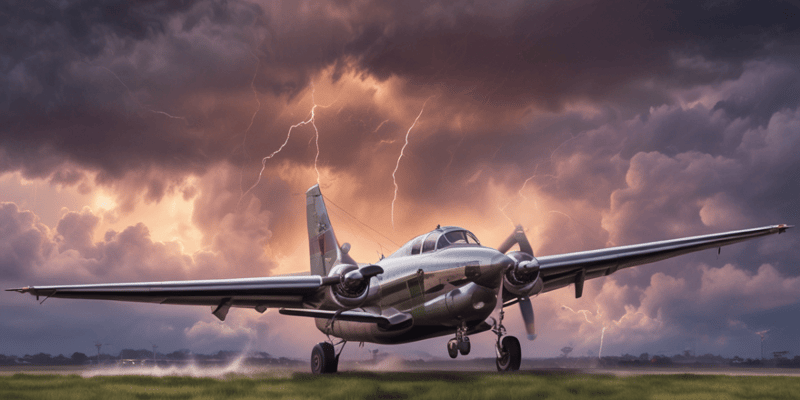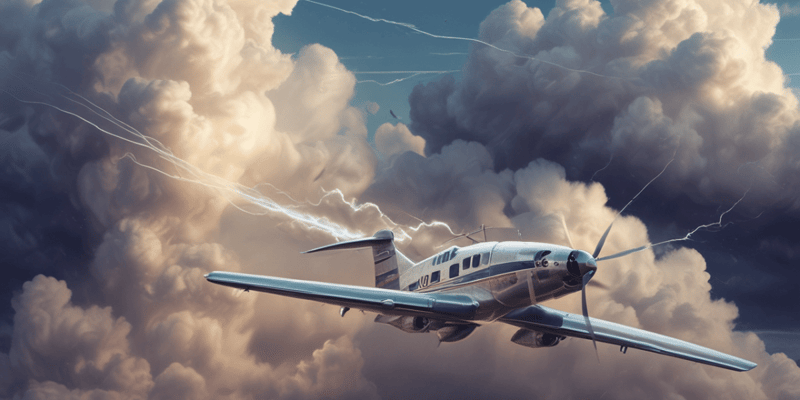Podcast
Questions and Answers
What is the recommended distance to maintain from a Thunder Storm if the freezing level is less than 30,000 feet?
What is the recommended distance to maintain from a Thunder Storm if the freezing level is less than 30,000 feet?
What factors impact VHF and HF/MF signals?
What factors impact VHF and HF/MF signals?
What phenomenon is commonly encountered when rain falls but evaporates before reaching the ground?
What phenomenon is commonly encountered when rain falls but evaporates before reaching the ground?
What information does the Automated Limited Weather Information System (LWIS) provide?
What information does the Automated Limited Weather Information System (LWIS) provide?
Signup and view all the answers
In the event of a two-way communication failure during VFR conditions, what should a pilot do?
In the event of a two-way communication failure during VFR conditions, what should a pilot do?
Signup and view all the answers
Study Notes
Thunder Storm
- Maintain a distance of 10 nautical miles (nm) from thunderstorms (TS) when flying at a high freezing level below 30,000 feet.
- If below freezing level, increase distance to 5 nm from TS.
- For altitudes above freezing level, maintain a distance of 20 nm from TS.
VHF Signal
- VHF (Very High Frequency) signals depend on the line of sight; obstructions can disrupt the signal.
- HF (High Frequency) and MF (Medium Frequency) signals rely on the reflection of the ionosphere for propagation.
Rain
- Encountering rain with a dry microburst can occur when rain is falling but not yet reaching the ground, a phenomenon often referred to as virga.
LWIS
- The Limited Weather Information System (LWIS) provides automated updates on:
- Wind direction, speed, and gust information
- Temperature and dew point readings
- Altimeter setting
- LWIS information is similar to that provided by the Automatic Terminal Information Service (ATIS).
VFR
- In the event of a two-way communication failure during Visual Flight Rules (VFR) conditions:
- Squawk code 7600 is recommended.
- Maintain VFR flight conditions.
- Navigate to the nearest suitable airfield for landing.
Studying That Suits You
Use AI to generate personalized quizzes and flashcards to suit your learning preferences.
Description
Test your knowledge on aviation weather phenomena such as thunderstorms, VHF signals, and rain effects. Learn about safe flying distances and how different signals function in aviation communications. This quiz covers important aspects that pilots need to know in various weather conditions.




